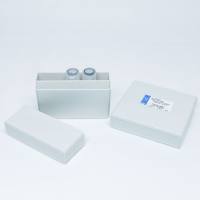Characterizing Resection at Random and Unique Chromosome Double-Strand Breaks and Telomere Ends
互联网
互联网
相关产品推荐

Recombinant-Saccharomyces-cerevisiae-Putative-maintenance-of-telomere-capping-protein-7MTC7Putative maintenance of telomere capping protein 7
¥10010

VIRE2/VIRE2蛋白Recombinant Agrobacterium fabrum Single-strand DNA-binding protein (virE2)重组蛋白63.5KDA virulence protein蛋白
¥2328

铜,7440-50-8,PrimorTrace™, ≥99.999% metals basis, bars (random sizes),阿拉丁
¥872.90

Recombinant-Saccharomyces-cerevisiae-Protein-RTC2RTC2Protein RTC2 Alternative name(s): Restriction of telomere capping protein 2
¥11410

ATM抗体ATM一抗抗体Telomere fusion protein antibody抗体ATM Antibody抗体
¥880

